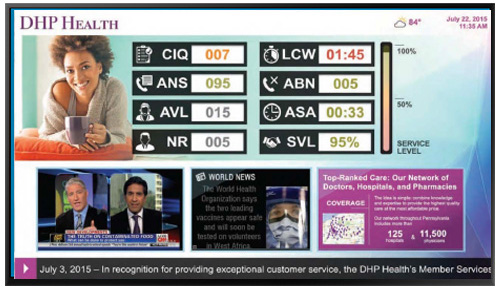Digital transformation is not a new idea and has been a topic of discussion in boardrooms for years. 2020 has only accelerated the pace at which businesses are approaching critical transitions to maintain business continuity and thrive even in times of disruption. One area that became a vital transition in 2020 was the need for change in how companies communicate with their employees and enable them with information to perform at pre-pandemic levels.
With the lines sufficiently blurred between the physical office environments and where your employees are performing the work, it quickly becomes clear that the one size fits all messaging no longer meets the evolving needs of hybridized and remote workforces.
To accurately reflect this changing workplace dynamic, companies are expediting the need for digital workplace initiatives. The concept is to securely provide personalized, role-based, communications, data, services, and applications to an employee on any device, regardless of location or time through a digital consumer-like experience.
Key Takeaways
Why Digital Workplace Technology is Essential
Reaching all employees anywhere became critical this year and benefits of workplace platforms begin with the ability to reach all employees regardless of location or device being used. The past year clearly illustrated the gaps in traditional communication that have communicators only reaching small segments of their total audiences. Digital workplace communications platforms rectify this problem reaching employees where they are through multiple or targeted endpoints like signage, desktop delivery, mobile, web, intranet, social and email.
Apart from signage, all other delivery points require some form of endpoint authentication to provide secure access to the user. This authentication then extends the ability of some endpoints to deliver information the employee uses daily in the performance of their duties.
So, the primary question in planning your initiative is — Can I reach everyone by providing them an endpoint and authentication? If not, how do we solve for that?
The next benefit of transformation is the ability to target individuals or groups of users with specific content. Understanding that a diverse workplace audience with varying roles and interests no longer benefits from blanket messaging, targeting using employee META data can deliver information to the right individual, group, or location to support corporate objectives.
Like any other technology you’re familiar with, workplace communication platforms are only as good as the data that drives them so, refer to your HR system or active directory to ensure that employee data is accurate and maintained before implementation of a new initiative.
Once your data is clean and your targeting is in place, other benefits are realized through employees enabled with quick access to resources, business systems and applications. Gain the ability to drive efficiencies with a unified platform to create, publish and measure communications performance in a single platform, giving time back to focus on strategy or creating new relevant content for your audience segments.
Proper technical enablement, efficient integration configuration, and training take, what was once a lengthy process and turn it into a streamlined project that, once technically enabled, brings efficiencies of scale to your enterprise.
A Partnership between IT and Comms is Critical
Another evolving dynamic witnessed was they growing partnership between communications professionals and their IT counterparts. Whether you’re implementing your workplace communications platform or evolving your technology to the next level, the need for cooperation between your comms and IT teams is critical for success.
The partnership between IT and communications becomes an evolution of what most marketing teams already comprise, a mix of technical and operational knowledge that drives projects to completion. With the numerous role types and types of content to be delivered, the partnership evolves from one of help only when troubleshooting is needed, into a joint initiative that spans the entire enterprise.
A shared ownership of strategy and outcomes will, not only streamline implementation and adoption, but also set the stage for future integrations of business systems that frequent enterprise operations.
Value of a Digital Workplace Communications and Experience Strategy
Measurement
All projects begin with a discussion of goals and desired outcomes. It is no different when planning an internal communications platform implementation. What are you trying to achieve?
Start by clearly defining your objectives from something vague like “increase engagement” to something more salient like “increase brand sentiment and customer satisfaction” which can be paired with performance indicators like clicks, likes, shares, and comments to evaluate your strategy’s performance and adjust to better align to corporate objectives.
Some comms teams work with HR to define the employee’s journey or the different events in the employee experience whether it’s onboarding, training, re-training, or moving to a new department. Identifying what to measure when gauging performance of your workplace internal communications platform is essential to deliver insights that matter. A few of the common indicators of performance success are:
- Reach: Are you reaching everyone? Are the accessing mobile, web or the inranet platform?
- Active Use: How many are actively utilizing the information? Frequency of use and active behavior or if they need to be re-engaged all becomes evident.
- Impressions/Views: How many overall impressions were delivered as compared to views and what does that say about your strategy?
- Engagement activities: Clicks, likes, shares, or comments serve to inform on behaviors around your content and its effectiveness.
Using various combinations of these performance indicators aligned to your organizations larger goals can serve as basis for some critical analysis and lend support for intelligent business decisions. We are seeing companies are take this approach to external audiences as well with optics measurement ability evaluating foot traffic, impressions, facial recognition for behavioral patterns like head turns to view messaging that all can tie back to goals of their communication efforts.
Audience Segmentation and Targeted Content Strategy
Now let’s think about how we break up our total audience into segments for information delivery. Do you break them up by role, location or use both combined with other attributes to define what content goes to which part of the audience? This then becomes a balance of what you think the business needs to communicate and what the employee wants or needs. If you’re not understanding those needs, then poll your audience to determine those needs. Using focus groups, talk to your employees and understand their core needs and the best way to deliver relevant content.
What is that relevant content and how can it be produced for general distribution? Do you have varying methods produce? These all become relevant questions when deciding what content to produce and distribute.
Video: Video is no longer cost prohibitive for communicators. Companies are finding that even video produced from a phone has good quality and an authentic feel that resonates with audiences.
User generated content: Letting users submit content, and comment on relevant content give a voice to the employee and will deliver higher engagement that content delivered by admins and communicators.
Data visualizations: Data comes from many sources so how do you visualize that data in an effective way for delivery and utilization? You may need to rely on other features of the platform to maximize adoption like the use of gamification.
Find that mix, experiment to find what works for your organization. This is where an internal or employee communications platform becomes an experience and engagement platform that truly drives better business outcomes through measurement against your goals.
Moving from Centralized to Decentralized Content Publishing
Content publishing has been a big undertaking requiring specialized team members performing various roles in production to deliver a product to all or a portion of an organization. As we have discussed the costs for production have been greatly reduced with the advances in technology giving the power of creation to the individual user and we are seeing companies use some innovative techniques around decentralized content delivery with their internal communications programs. How do you effectively onboard and train these new communicators?
Setting up some governance around your program along with workflow processes and platform roles is the first step in decentralizing your workplace communications. Defining the users of the system, levels at which they interact and providing approved templated content or pre-defined layouts opens the platform to a wider audience and the response has been that user generated content is the most popular among surveyed users.
Have a Promotional Strategy to Drive Awareness and Adoption
Once you have made this investment in your time, money and technology, how can you ensure awareness and adoption of this new technology? A “build it and they will come” mentality does not really cover all the bases.
Like developing plans for implementation of your platform, you’ll need to devote time and planning to a promotional strategy that drives awareness. Consider audience segmentation and level of value brought by each type of communication to the end user segment. What does that awareness look like what should the rate of adoption be? What is the message we want the employee, on a 5-minute break in a common area, to see and remember?
There are many methods for reaching your audience to gain adoption that you can use. Leadership utilizing the technology is a great way to drive adoption. If the leadership is using the system along with managers and supervisors, employees will want to follow suit and adopt the new technology. But don’t stop there, try launch events or support with email campaigns and SMS messaging that might include a short video or a landing page. Use contests to create excitement and even print can play a part in the launch of the platform by delivering mailers to remote employees. So, get creative and watch your program grow.
Leadership’s Role in the New Communications Strategy
Finally, we discovered that when leadership takes a role in the adoption and awareness of the internal communications platform, the transition time to adoption and utilization is greatly reduced.
While it may be difficult to get leaders to utilize the system, we’ve seen that those 90 second videos produced in the kitchen really get results. So, you’ll want to consider how to maintain that involvement post pandemic whether that’s working with people to develop that top-down content or even just liking, sharing, or commenting.
When looking to upgrade your workplace experience it should be a coordinated effort not taken lightly. incorporating the learnings, we’ve seen over the past few years and more specifically those from 2020, it is crucial to develop a platform that meets, not only the needs of the business, but also enhances the employee workplace experience to deliver increased engagement that results in higher productivity and profitability.









